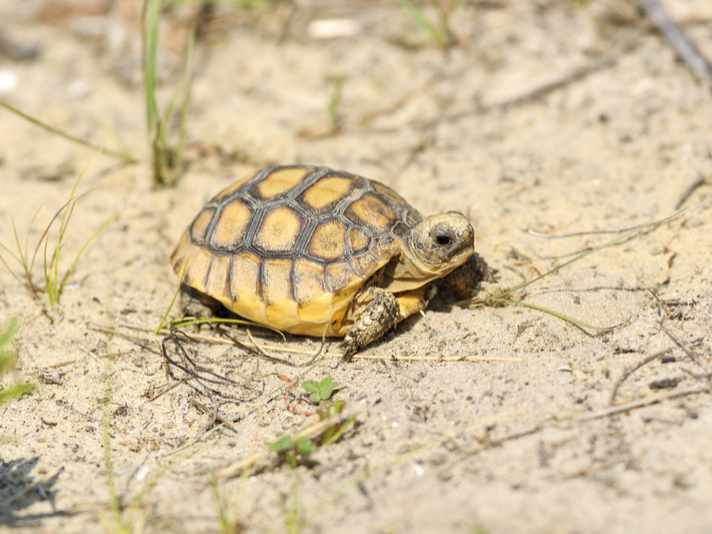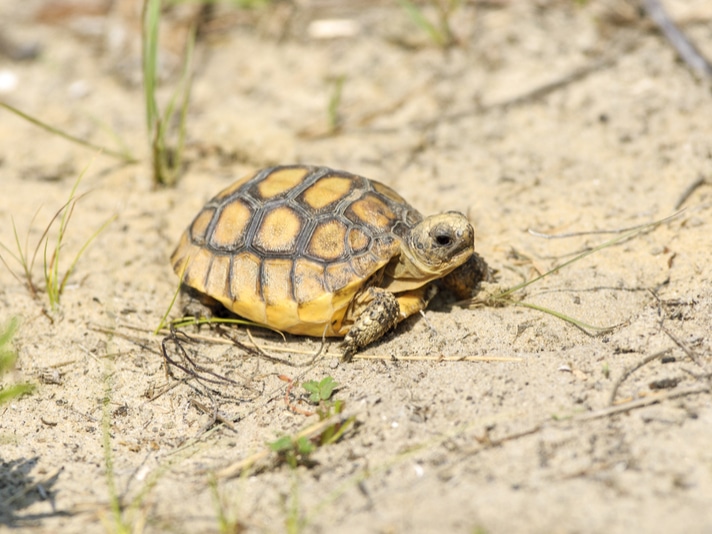If all goes well, gopher tortoise hatchlings will emerge from the nest in late summer.
A gopher tortoise (Gopherus polyphemus), perhaps the most well known protected species in the state of Florida, gave a Lake Mary woman a huge surprise when the gravid chelonian decided to build a nest and lay her eggs, right in the woman’s front yard.
"My older dog started rushing to one side and I had to pull him back real quick,” Michelle Koch told WOFL FOX 35 when she first brought the dogs out for their walk. “And then, all of a sudden, I see dirt flying and I realized it's a gopher tortoise digging a hole in my yard."
Koch then went inside her home and alerted the rest of her family, who all came out and watched the tortoise deposit her eggs in the nest and then leave the premises. The entire episode lasted about 15-20 minutes, Koch said.

Wildpix 645/Shutterstock
If all goes well, gopher tortoise hatchlings will emerge from the nest in late summer.
Koch erected a barrier around the nest in an effort to protect the eggs from wayward children, dogs, or predators. She told WOFL FOX 35 that, based on her research, the hatchlings should come out of the nest in late August to mid-September.
Minnesota Woman Celebrates 56 Years With Her Gopher Tortoise
Gopher tortoises lay between three and 14 eggs based on their body size. They lay just one clutch each year and the eggs take about 90 days to incubate.
Gopher tortoises are protected throughout their range either by state or federal law. Gopher tortoises are listed as threatened species in the state of Florida. Both the tortoise and their burrow are protected. They reach maturity at 10-15 years of age and are considered a long-lived tortoise. They are a keystone species, as hundreds of other species utilize the burrows that they dig.


